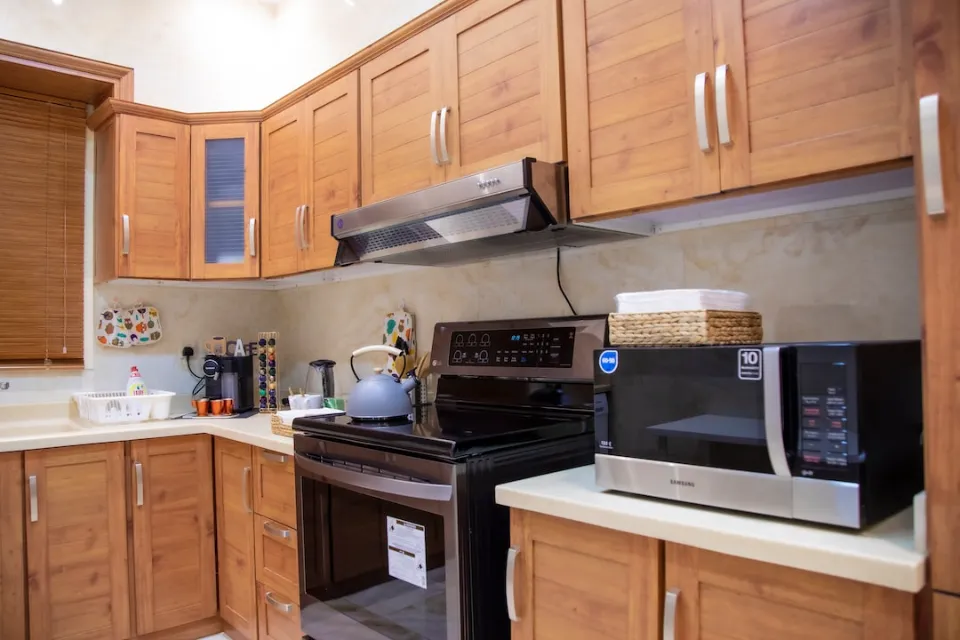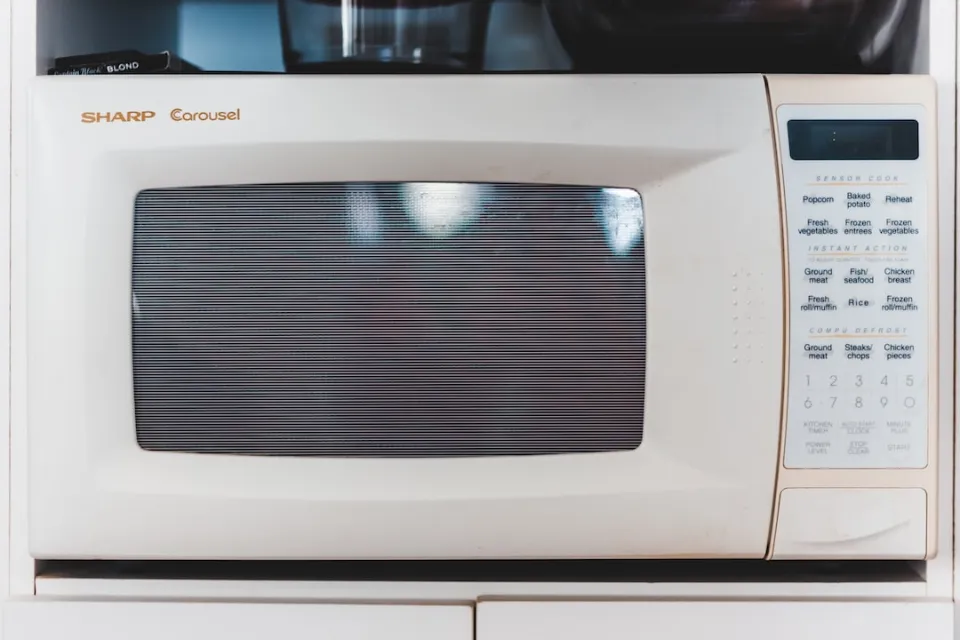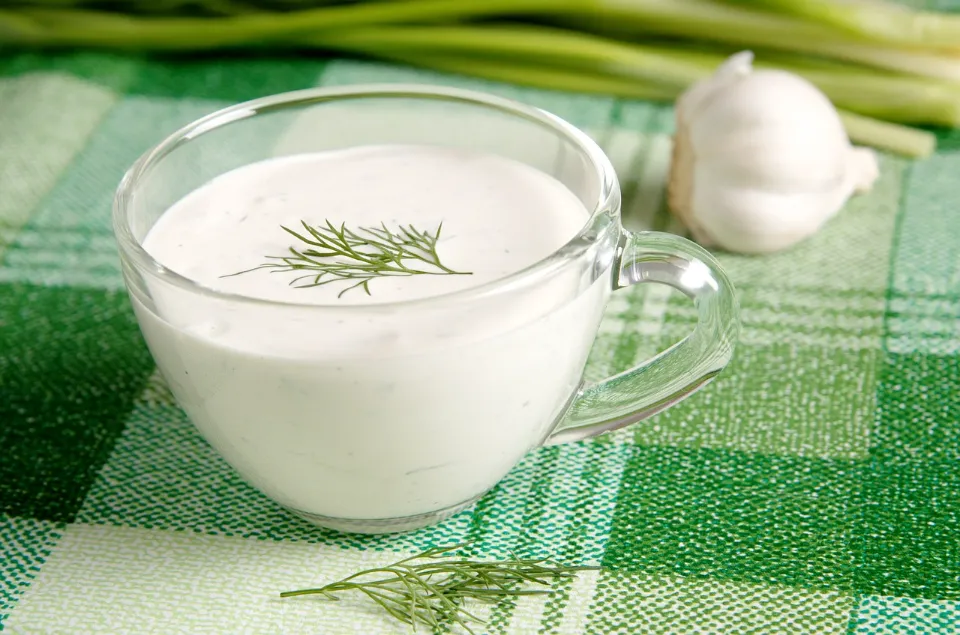Since they can cook anything from frozen vegetables to prepackaged meals in a matter of minutes, microwave ovens have long been a kitchen necessity. However, as you zap your food, you might be concerned about how close you can safely stand to a microwave and whether radiation might leak from the appliance and possibly harm you.
Because some of the adverse symptoms include nausea, vomiting, hair loss, diarrhea, and generalized weakness of the body, you can stand at a safe distance in front of the microwave.
Heat food in a microwave oven for convenience, speed, and affordability. Developed nations have changed the way people eat, and they are in almost every home. It’s important to understand how a microwave oven works, what kind of radiation it emits, and how to use it safely.
How Close Can You Stand to Microwave?

Since the middle of the 20th century, radiation exposure has been a major public health concern. All radiation was scrutinized after the effects of atomic bombs became well known. Whether it was from the sun, an electric pylon, or household appliances, everything was measured, and regulations were introduced to keep the public safe. This evaluation took into account the microwave oven.
A microwave oven is only allowed to leak five milliwatts of microwave radiation per square centimeter at a distance of two inches over the course of its lifetime, according to FDA regulations. The FDA tests microwaves in its own labs at the Center for Devices and Radiological Health to make sure every product on the market complies with these requirements. You are not at risk for any health problems as long as the appliance complies with these standards.
Dielectric heating is the method used in microwave ovens to generate heat. The radiation losses with distance are exponential. As a result, standing 20 inches away from microwave results in a 100 times lower radiation dose than doing so at a distance of 2 inches. Therefore, if you are worried that your microwave is exposing you to too much radiation, move backward to exponentially reduce the dose. Be aware that the FDA does not advocate for a minimum safe distance.
How Do Microwave Ovens Work?
An electron tube known as a magnetron is responsible for producing the energy in a microwave oven. The magnetron takes electricity from the power outlet and converts it into microwaves.
Food, particularly the water molecules therein, absorbs microwaves. As the water molecules start to move around and vibrate, heat is produced, which cooks the food.
Read More: How Does A Microwave Oven Work – Complete Guide to Use It in 2023
Microwave Radiation is Safe

Standing in front of a running microwave oven is completely safe. Since the waves are contained inside the oven, microwave ovens work as intended. Food is cooked by absorbing microwave energy, which raises the food’s temperature.
Leaving an empty microwave oven running for long periods can be a fire hazard, but standing in front of one shouldn’t be a problem.
Understand Microwaves and Types of Radiation
A type of electromagnetic radiation, or waves of electrical and magnetic energy moving through space together, is what modern microwave ovens use to operate. These microwaves operate at 2,450 MHz. Microwaves are part of the electromagnetic spectrum, which is broken down into seven main bands, starting with those of the lowest frequency: radio waves, microwaves, infrared, visible light, ultraviolet, X-rays, and gamma rays.
Higher wavelengths and lower energy levels are associated with lower frequencies. As a result, gamma rays have the most energy while radio waves have the least. An electromagnetic wave’s ability to harm biological systems increases with energy.
There are two forms of radiation: ionizing and non-ionizing. The most hazardous type of radiation is ionizing radiation because it has an impact on an atom’s surrounding electrons. This means that the chemical composition of molecules within your body, such as your cells and DNA, can actually change as a result of this type of radiation. This particular form of radiation is primarily linked to cancer and burns. X-rays and gamma rays fall into this category.
Fortunately, microwaves fall into the safer kind of electromagnetic energy and are classed as non-ionizing radiation. In other words, radiation from microwaves doesn’t change the chemical composition of the molecules that it passes through. The type of radiation used by microwave ovens is the less harmful kind, even though radiation exposure at excessive levels is always a serious health concern.
The correlation between microwave ovens and cancer has not been recognized, despite extensive investigations. Worldwide cancer organizations currently view using microwaves as safe.
Why Do We Use Microwaves to Heat Food?

The majority of methods for heating food involve moving thermal energy from one surface to another. Microwaves, however, run in a different way. The bonds in the water molecules inside of food, however, are made to vibrate by non-ionizing radiation. Everything nearby is heated by the vibration’s thermal energy.
Food contains water molecules that are evenly distributed, and the heating is the same. Food heats up more quickly the more water it contains. Because the microwave only heats the food and not the entire oven, they are a remarkably effective method of cooking food. Compared to a convection oven, which only heats the food inside, a conventional oven wastes energy heating the entire compartment.
Microwaves are suitable for heating food because they have three essential characteristics.
- First, they are reflected by metal, which allows the microwaves to be contained within the oven’s casing and via the mesh on the door. This avoids unintentional leakage.
- Second, microwaves can penetrate a wide range of substances, enabling them to penetrate food. These include glass, plastic, paper, ceramics, and thin fabrics.
- Finally, microwaved food is safe to eat because the food you are heating absorbs the microwaves, converting the microwave energy into thermal energy.
Before it is entirely absorbed, the microwave can reach a depth of about 1 centimeter in food. As heat transfers from the outside to the center of the food, the remaining portions are heated by convection. Because of this, food that is thinner, such as a baked potato, requires much less cooking time than food that is thicker.
Remember that food inside hot dishes warms them, not microwaves, and not the other way around. Microwave-safe products are those that can tolerate the temperatures of microwaved food without melting or causing burns to the user.
Will You Get Cancer from Standing in Front of the Microwave?

No, staring at the microwave will not cause cancer. Since microwaves produce non-ionizing radiation, they do not have enough energy to damage your DNA.
Ionizing radiation, or radiation that is powerful enough to ionize molecules by removing their electrons, is required for radiation to harm DNA. The inability of microwaves to ionize matter results from their lack of power.
Tips for Using Your Microwave Oven Safely
- Never operate an empty microwave oven. The microwaves could harm the oven and/or start a fire without food or a container of water to deflect them into.
- Spend as little time as possible standing close to a microwave that is in use. The short-term health effects that could result from this include headaches, dizziness, memory loss, cataracts, and other eye issues.
- Use recommended cookware; only use dishes and utensils in your microwave oven that are microwave-safe. Use of metal plates or containers will cause microwaves to reflect off of them, potentially harming the appliance or starting a fire.
- Use only plastic containers that are marked as being safe for the microwave.
- Let children use the microwave only with an adult present. Teach them the proper way to use it, especially when cooking or reheating hot foods and liquids.
- If you need to remove hot food or liquids from the microwave, use oven mitts. This is especially important if you’re taking something out of the microwave like a cup of coffee or tea, which may still be very hot even though the container feels cool to the touch.
- carefully read the instructions on the package. Before heating containers in the microwave, make sure that all metal twist ties and cardboard packaging have been taken off.
- Never heat anything inside a sealed container because the pressure buildup could cause the item to explode, causing both personal injury and appliance damage.
Final Thoughts

While microwave ovens use a form of energy that emits radiation, it is perfectly safe to stand close to it during operation. The FDA is only concerned with radiation that is two inches or less from the surface of the oven door. You won’t get a dangerous dose if you are at least that far away.
Food is effectively cooked in microwaves by causing water molecules to vibrate, which releases thermal energy and warms the food. Your food will cook more quickly if it is thinner and contains a higher percentage of water.
Related Questions
Why Can You Not Put Metal in a Microwave?
It is not advisable to place anything metallic inside a microwave. The edges of metallic objects can cause microwave arcing. Electrical current that conducts out of control ionizes the air around it, causing arcing to occur. A microwave’s internal sparks are proof that arcing is occurring. This is dangerous and can lead to a fire inside the microwave as the air combusts.
Despite this danger, you may occasionally find metals graded as microwaveable. If the metal is smooth with no sharp edges, then that is possible. The metal cannot produce an arc in this configuration. Additionally, metal shouldn’t be used in a microwave because it reflects microwaves. As a result, the food inside won’t heat uniformly.
Do Microwaves Destroy Nutrients in Food?
It is widely believed that microwaving food causes its nutritional value to decrease. Studies on this matter have been inconclusive. According to one investigation, broccoli’s vitamin C was destroyed by the microwave while all of its minerals were preserved. While that may seem concerning, it neglected to mention that vitamin C is easily destroyed by heat and is lost whether the broccoli is microwaved, fried, boiled, or roasted.
On the plus side, compared to other cooking techniques, studies have shown that food cooked in a microwave oven retains the most antioxidants. Omega-3 fats were observed to follow a similar pattern during the preparation of sea bass. Overall, there is no conclusive scientific evidence to suggest that microwaving food has harmful nutritional effects.
Is Looking into a Microwave Dangerous?
The eyes and testes are two body parts that are particularly vulnerable to harm from microwave radiation. Both have very little blood flow, which prevents the body from dispersing heat from those regions. Microwave damage can result in cataracts because the lens of the eye is primarily impacted by heat.
However, these warnings are only applicable to large doses of microwave radiation. For enough microwaves to leak and heat your eyeball inflicting such harm, you would need to stand close to a microwave oven for a long time. Overall, stay two inches away from the microwave when it is on, and you’ll be safe.








